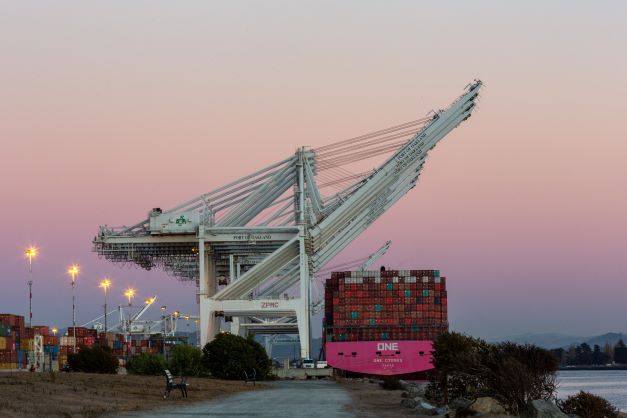Where are the future European logistics hotspots?
Large-scale infrastructure projects across Europe driven by decarbonisation targets are creating huge opportunity in logistics market.
4 minutes to read
Location, access to transport links and multi-modality are key factors for logistics operators as the speed of delivery and reliability matter more than ever.
A lack of conventional policy tools to support economic growth and the push for more decarbonisation policies are encouraging large-scale infrastructure projects across Europe. This will offer opportunities for logistics investors and developers alike as there is a need for new multi-modal warehouse facilities accessible by different transport modes around existing and emerging infrastructure hubs.
Infrastructure investment
The trans-European transport network (TEN-T) requires an investment of EUR550 billion over 2021-2030, according to the European Commission. The full implementation of the TEN-T core network could lead to an additional GDP increase of 1.6% by 2030 and CO2 reduction of 12.5 million tonnes in 2030, M-Five GmbH estimates.
Italy will receive the largest share of total TEN-T funding in 2021-2030, followed by France, and Germany while Poland and Spain will also see substantial funding.
The most established logistics corridor in Europe is the so called ‘Blue Banana’ which runs through the Rhine-Alpine TEN-T network and includes major economic centres such as the Randstad region in the Netherlands, and the German Rhine- Ruhr and Rhine-Neckar regions. These well-connected locations offer opportunities in or near major urban centres with high population densities where competition for land is strongest and supply of industrial and logistics stock is most constrained.

Investment opportunities
Other logistics investment opportunities are around key cities of Southern and Eastern Europe such as Milan, Barcelona and Valencia which form the so-called ‘Golden Banana’ logistics corridor, as well as Madrid and Warsaw as they are catching up in terms of e-commerce growth and are benefitting from infrastructure investments.
Emerging logistics hubs in locations such as Ireland, Denmark and Finland are of increasing interest for investors as occupier demand in these markets is growing underpinned by trade agreements, infrastructure expansion, nearshoring trends, and the availability of land for industrial development.

Rail and waterway centric transport
While road transport is by far the easiest mode for last-mile delivery because it can reach nearly all end consumers, it is also a key contributor to carbon emissions and more logistics operators and corporates are committing to net zero.
Investors are increasingly considering warehouses that support more sustainable transport modes. Maritime transport will likely continue to be the dominant freight mode in Europe offering high capacity and access to global markets at low cost.
Rail is projected to be the fastest growing freight mode in Europe in 2020-2030, according to the OECD, driven by decarbonisation policies as trains produce three times less emissions than road transport. The European Commission’s Sustainable and Smart Mobility Strategy aims to double rail freight traffic by 2050.
"Transport of goods by road is a key contributor to carbon emissions and more logistics operators and corporates are committing to net zero. Investors are increasingly considering warehouses that support more sustainable transport modes."
As part of the TEN-T investment programme, several cross-border rail centric projects are taking place including the Fehmarn Belt Tunnel connecting Denmark and Germany, Rail Baltica linking Finland and the Baltics with Poland, and the Brenner Base Tunnel from Austria to Italy, which will increase freight capacity. The Fehmarn Belt Tunnel, for example, will help integrate the peripheral Nordic locations into Central Europe and is expected to create new logistics opportunities for longer-term investors in the Hamburg and Schleswig-Holstein regions in Germany, the Copenhagen region and southern Sweden strengthening the ‘Green Banana’ logistics corridor.
Lower carbon alternatives
In the Netherlands multi-modal logistics facilities with maritime, inland waterway and rail links located in the logistics hubs of Amsterdam, Schiphol, Rotterdam, Utrecht, Eindhoven, Tilburg, Venlo, and Bleiswijk that are well connected to international distribution networks, provide opportunities for logistics investors seeking lower carbon alternatives. In 2020, almost half of the freight transport vessels on EU inland waterways were registered in the Netherlands, according to Eurostat.
Direct shipping
A new direct shipping route between Dublin and Amsterdam was also launched at the end of January 2021 and expanded in May due to growing demand to avoid post-Brexit customs checks. This will also help integrate Ireland further in the TEN-T network. The route provides access to Amsterdam’s network of rail, road and inland waterway connections with the latter playing a strategic role for freight transport between the ports of Rotterdam and Amsterdam, and Germany as well as Belgium.